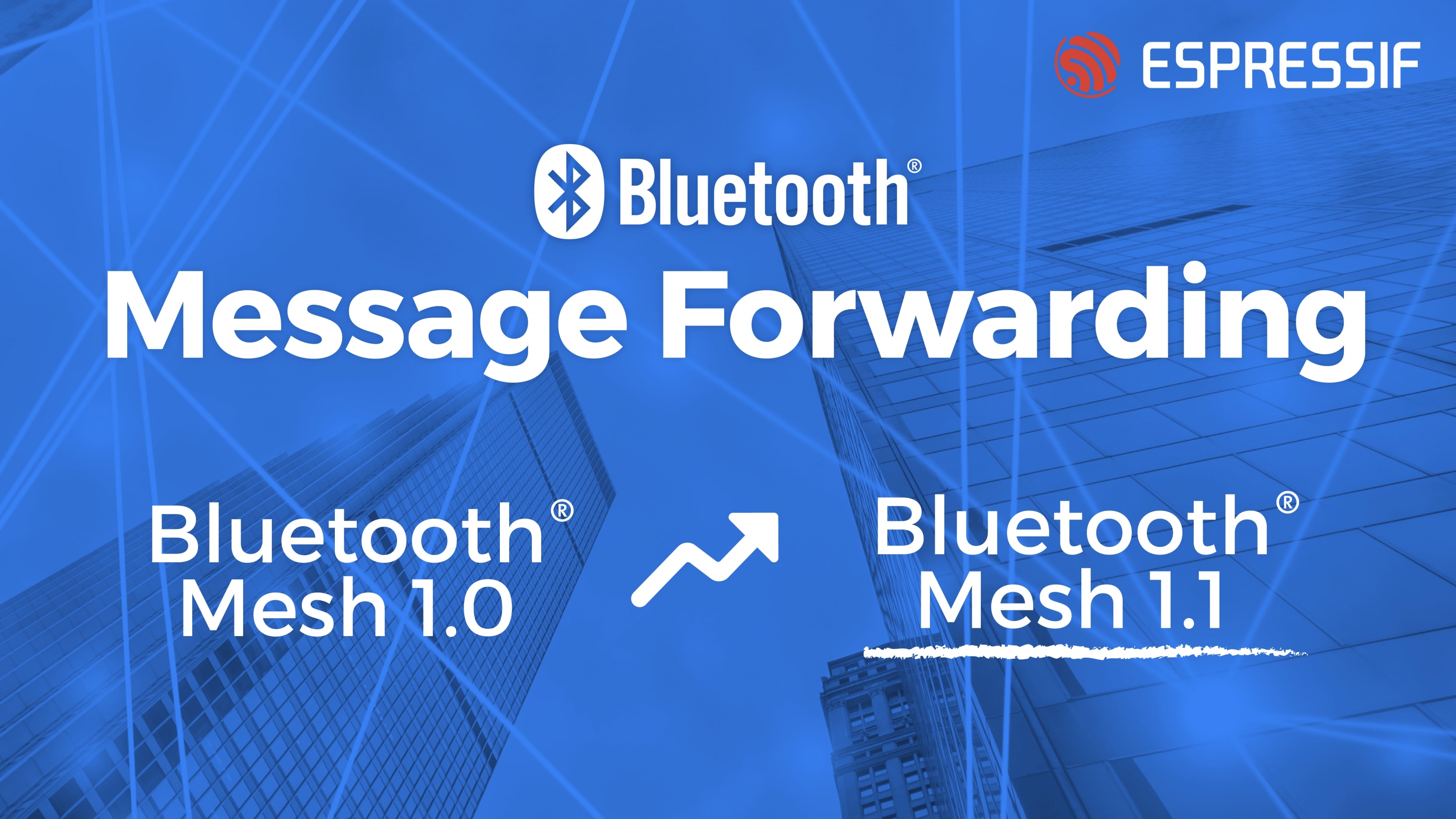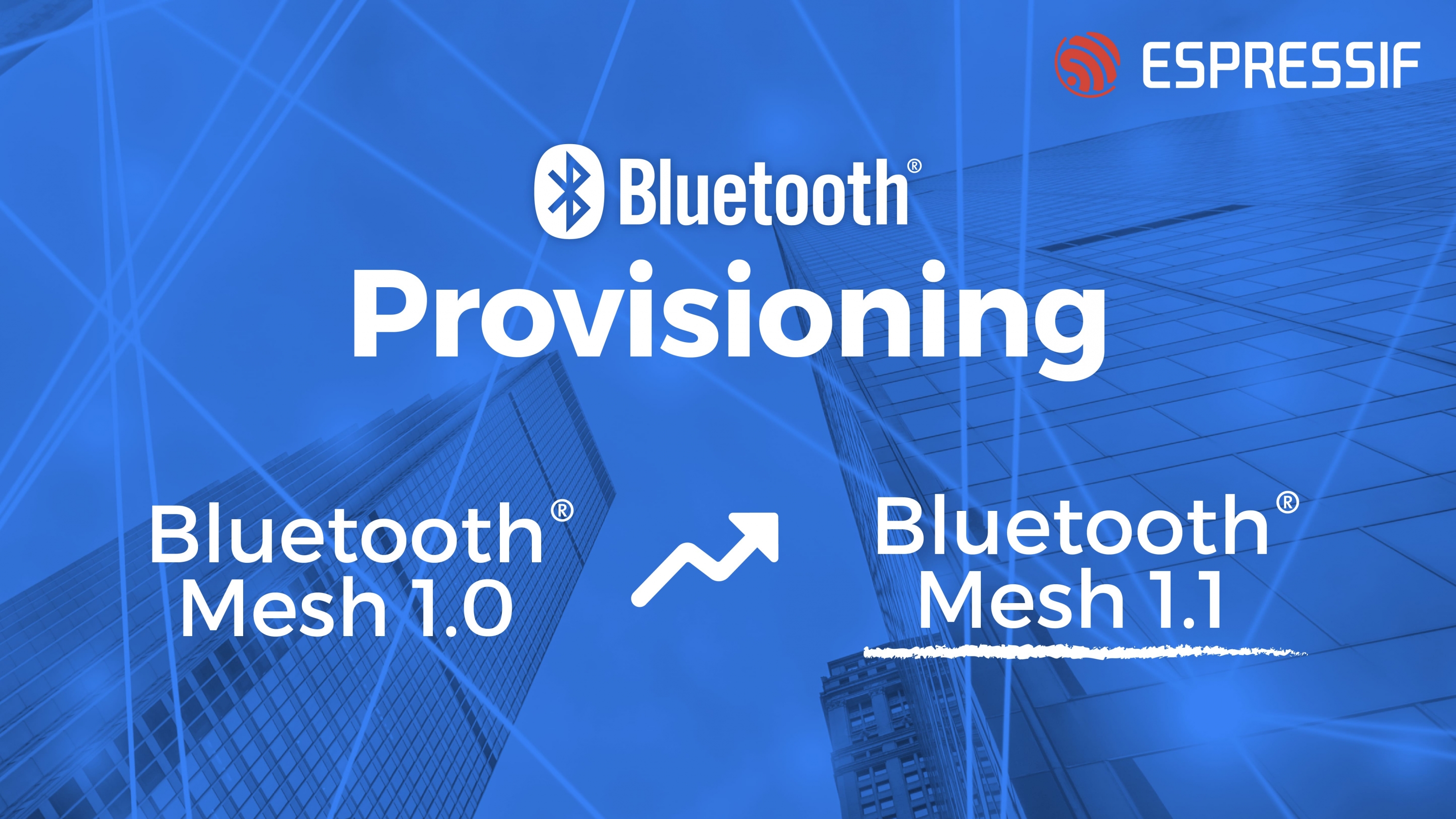- Home
- Hardware
- SDKs
- Cloud
- Solutions
- Support
- Ecosystem
- Company
- Contact
news
Espressif Takes the Lead in Supporting Bluetooth® Mesh Protocol 1.1
Shanghai, China
Sep 18, 2023
Espressif, with its dedication to developing Bluetooth Low Energy wireless communication during the last several years, has proved its technical prowess and innovation capabilities which can reliably support Bluetooth Mesh-based IoT applications.
Espressif Systems (688018.SH) is pleased to announce that its self-developed Bluetooth Mesh protocol stack, ESP-BLE-MESH, now fully supports the latest Bluetooth® Mesh Protocol 1.1. Espressif is one of the first companies to offer support for this update, prior to its formal release by Bluetooth SIG. This means that Espressif, with its dedication to researching and developing Bluetooth Low Energy wireless communication during the last several years, has proved its technical prowess and innovation capabilities which can reliably support Bluetooth Mesh-based IoT applications.
ESP-BLE-MESH is Espressif's proprietary protocol stack built upon Bluetooth Mesh. Any IoT devices based on it can communicate and collaborate with different types of standard Bluetooth Mesh devices from different manufacturers.
Espressif has been actively involved in promoting the development and implementation of SIG protocols, and has received recognition from the Bluetooth SIG for significantly contributing to the Mesh Profile Enhancement with CBP, ENH, EPA, PRB, and SBR improvements.

SIG Award (Screenshot from early September)
Bluetooth Mesh 1.1 represents a significant milestone in Bluetooth technology, introducing numerous innovative features aimed at standardizing device configuration and network management. Its primary goal is to enhance the stability, security, and scalability of Bluetooth Mesh networks.
Bluetooth Mesh 1.1 introduces several notable features, including:
1. Directed Forwarding
Bluetooth Mesh 1.0 utilizes a "Managed Flooding" approach to publishing and relaying information, which involves all relay nodes within the transmission range. This design is straightforward and reliable, since the failure of any node within the network does not impact the overall network. However, the drawback is that the participation of all devices in relaying can result in increased network load.
Not only does Bluetooth Mesh 1.1 maintain support for "Managed Flooding", but it also introduces a new routing mechanism called "Directed Forwarding". In this mechanism, nodes can deliver messages to the target node through one or multiple predefined paths. These paths can be dynamically created or specified by users through DF Configuration Models. This innovation greatly reduces the need for relay nodes, effectively alleviating the network congestion problem of all nodes participating in forwarding when sending longer data packets in a dense Bluetooth Mesh network.
It is worth mentioning that Bluetooth Mesh 1.1 supports dynamic switching between "Managed Flooding" and "Directed Forwarding". For example, in the "Directed Forwarding" mechanism, if the current node maintains only one forwarding path to the target node and the corresponding relay node on that path fails, the network will need some time before it can detect the node failure and establish a new routing path. In this case, the network can seamlessly switch to the "Managed Flooding" mechanism and send message data promptly.
Watch the "Message Forwarding" demo video by clicking on the picture above
2. Remote Provisioning
In Bluetooth Mesh 1.0 network, provisioners can only provision unprovisioned devices within their RF communication range. Users need to move the provisioner closer to each unprovisioned device to complete the entire network’s provisioning process.
Bluetooth Mesh Protocol 1.1 introduces the Remote Provisioning mechanism, where all relay nodes within the network can forward provisioning data to unprovisioned devices through a Remote Provisioning Server. This means that devices beyond the direct radio range can join the network without requiring the provisioning device to be physically moved. As a result, the network's configuration costs are remarkably decreased, making it easier for the network to be expanded.
Watch the "Provisioning" demo video by clicking on the picture above
3. Subnet Bridge
With the introduction of Subnet Bridge in Bluetooth Mesh Protocol 1.1, nodes from different subnets in the network can directly communicate with each other through bridge nodes. This innovative feature provides technical support for building larger-scale and more complex mesh networks, further expanding the application scenarios of Bluetooth Mesh.
4. Enhanced Provisioning Security
Bluetooth Mesh 1.1 enhances the security of provisioning by introducing the Certificate-Based Provisioning (CBP) and Enhanced Provisioning Authentication (EPA) functions. CBP verifies the public key and UUID in the device certificate, through the X.509 certificate's Public Key Infrastructure (PKI). The X.509 device certificates can be provided by device manufacturers or suppliers and be used during the provisioning process, to improve out-of-band authentication security. EPA provides a more secure authentication mechanism against man-in-the-middle attacks (MITM), enforcing mandatory verification for unprovisioned devices and ensuring provisioning security.
5. Enhanced Privacy
Bluetooth Mesh Protocol 1.1 protects beacon-transmitting devices from illegal tracking by introducing private beacons, thereby enhancing privacy protection within the network. This feature ensures the privacy and security of devices in the network by obscuring beacon data and improving beacon structure.
The introduction of Bluetooth Mesh 1.1 has significantly strengthened the capabilities of IoT applications that leverage this technology. Espressif's ESP-BLE-MESH offers comprehensive support for Bluetooth Mesh Protocol 1.1, which provides the industry with a more robust and refined Bluetooth solution. Our unwavering commitment to technological innovation drives us in leading the development of Bluetooth technology, based on our expertise in interconnected devices.
If you are interested in Espressif's ESP-BLE-MESH protocol and Bluetooth Mesh 1.1, please refer to the relevant examples here. You can also contact our customer support team, who will get back to you as soon as possible.




 LinkedIn
LinkedIn 微信
微信
 Twitter
Twitter Facebook
Facebook
